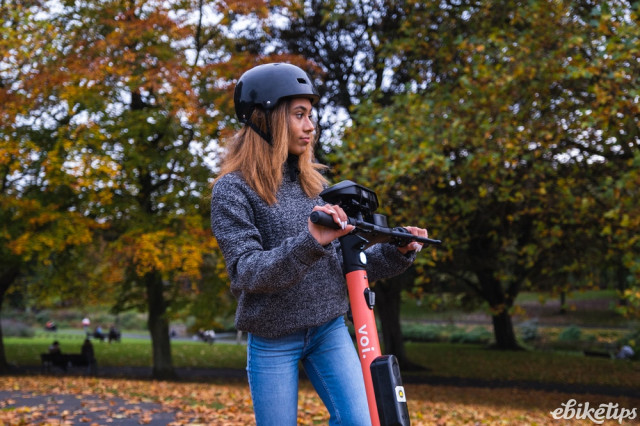E-scooter operator Voi has announced that it is trialling pedestrian detection technology in Northampton. Dublin micro mobility company Luna has developed the software which allows scooters to detect when pedestrians are close by, or when the rider moves from road to pavement, and will moderate the scooter’s speed accordingly.
Andrew Fleury, co-founder and CEO of Luna, explained: “As shared e-scooters continue to be rolled out in cities across the world, they need to become smarter and safer – for the benefit of riders, pedestrians and cities.
“With this trial, we look forward in particular to exploring how computer vision equipped e-scooters can improve the experience for riders, pedestrians, vulnerable road users, the Voi operations team, as well as local authorities themselves.
“The onus to date has been on pedestrians to detect, avoid and navigate around scooters. Luna’s smart scooter technology flips that around and allows operators and cities to govern their fleets better and avoid these conflicts to begin with.”
The software, which works via high-end camera sensors and Edge AI algorithms, can identify when the e-scooter is in a heavily pedestrianised area. It will then reduce its speed, based on predefined parameters.
It can also detect the kind of surface over which the scooter is being ridden (bike lane, pavement or road) and take similar measures.
The first phase of the trial will see the Northampton Voi operations team using Luna’s technology so that the scooters can ‘learn’ their environment. Once this phase is complete, the software will be integrated into the Voi e-scooters that are available for public use.
The same technology can also be used for parking, allowing e-scooters to be positioned with “centimetre-level accuracy” in designated areas.
Fredrik Hjelm, co-founder and CEO of Voi Technology, said: “We are embracing pioneering technology like this so that we can help shape cities for living, and to ensure that municipal authorities feel confident in including e-scooters as part of their smart city strategies.
“Having facilitated more than 30 million rides to date we understand deeply the issues involved in e-scooter safety. We believe in educating riders, but also in providing them with the kind of technology that supports them to use e-scooters responsibly.
“We are very proud to be the first e-scooter operator to incorporate the computer vision technology for the benefit of our riders, pedestrians and authorities.”
Last week the Dutch government announced that it is funding a project that will see e-bike motors cut in built-up areas. The technology has already been trialled and new regulations could be rolled out by 2022.





